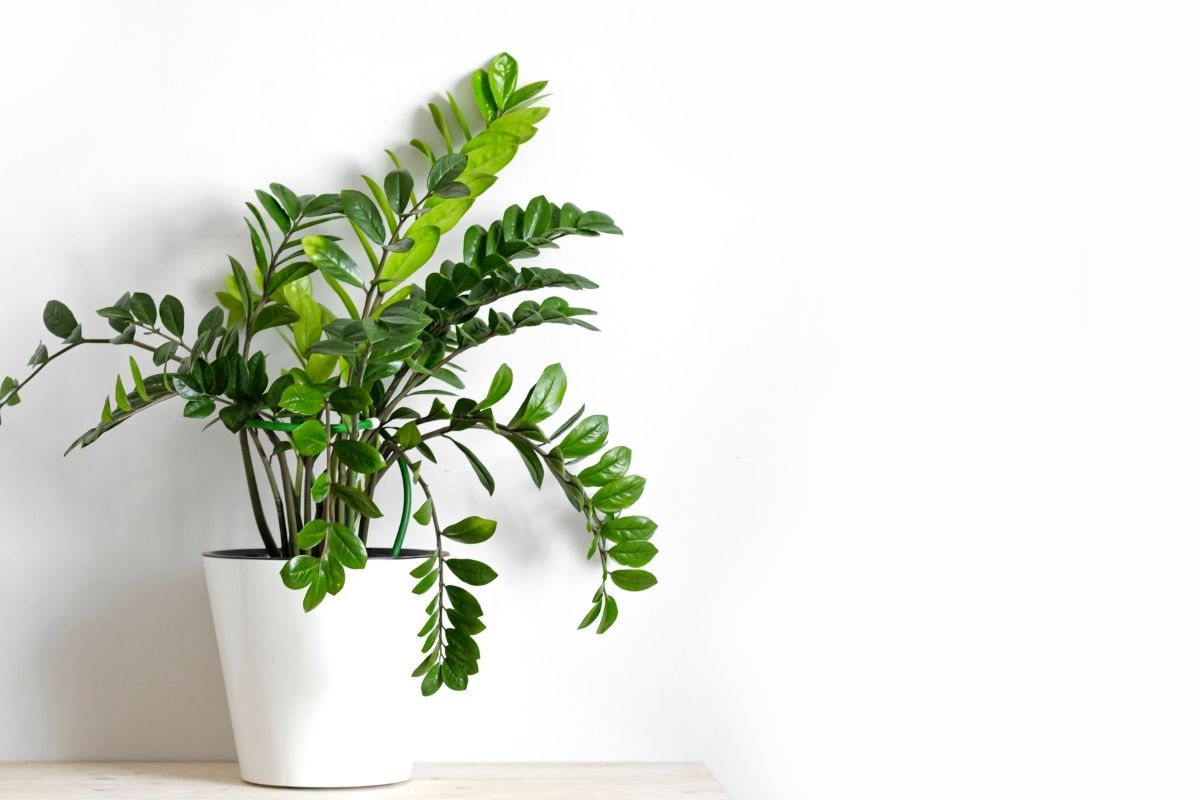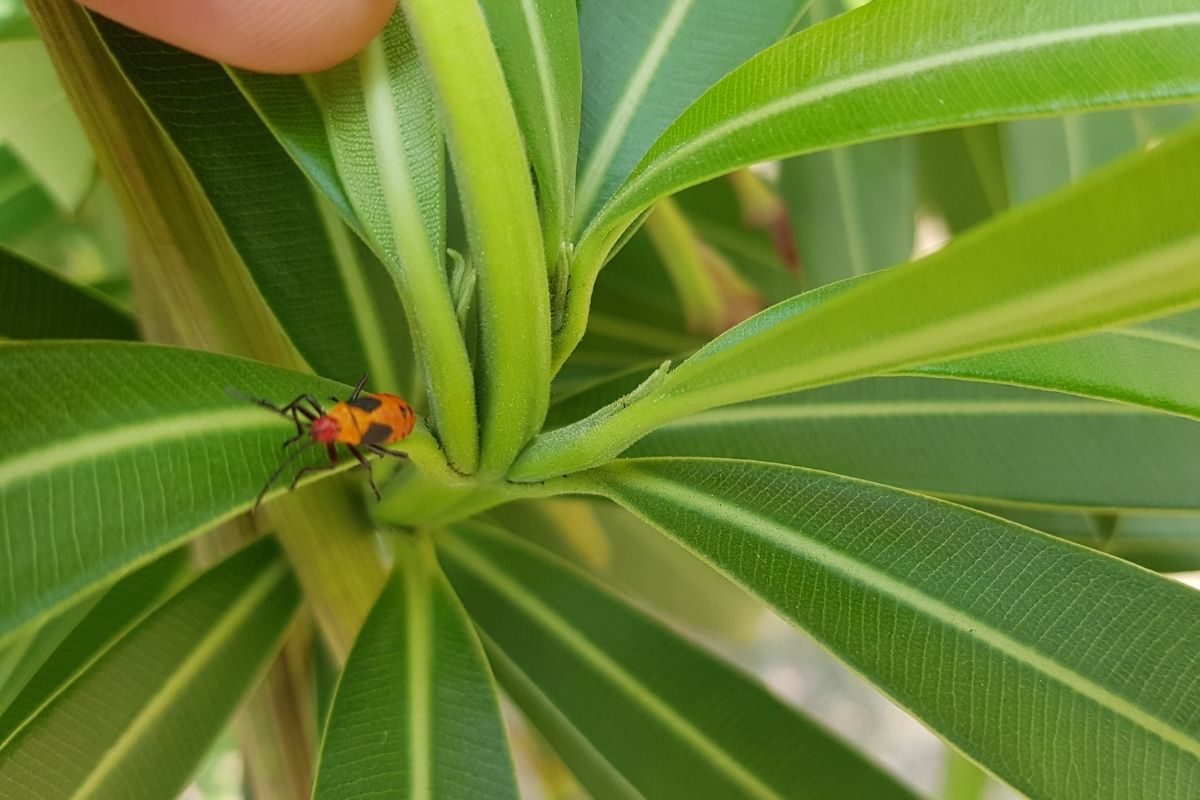In our humble opinion, the snake plant is the most perfect plant. They are pretty forgiving plants that have a uniquely striking appearance and boast leaves of a luscious shade of green. What more could you want from a houseplant?

Well, for those of you that are keen gardeners, you might also like to know whether snake plants can grow outside. If this is the case, check out our info-packed guide below.
We cover everything, from the snake plant’s preferred climate to how to get it to thrive in your garden.
What Is A Snake Plant?
Snake Plants are tropical plants native to the tropics and subtropics of Africa, Asia, Australia, Central America, South America, and New Zealand. They can be found in many other places around the world where they have been introduced by humans.
The name “snake plant” comes from their long thin leaves that look like snakes when viewed from above. These leaves are sturdy and sword-like, and they grow up to 8 feet tall.
Snake plants can vary in color and tone, but they generally have leaves with a dark green center and light green or yellow border.
Do Snake Plants Do Well Outside?
Yes! Snake plants make for really great garden decor. You can grow snake plants in pots or directly in the soil. However, snake plants will only thrive outside if the environment is right and they have access to the appropriate care and maintenance.
Things To Consider Before Moving A Snake Plant Outside

If you want to move your snake plant outdoors, take a look at the necessary environmental conditions and maintenance below. If you follow these tips and tricks, your snake plant will be thriving outside and making your garden look gorgeous in no time!
Location
Before moving your snake plant outside, it’s important to consider where you plan on planting them. We have found that a spot under the shade of a tree or wall is ideal for a snake plant.
This is because these spots get a nice amount of indirect sunlight, rather than direct sunlight. Too much direct sunlight can cause your snake plant a lot of damage.
Snake plants can also grow to be quite large. As such, be sure not to pot your young snake plant amongst a lot of other plants. This competition might not end well for your snake plant (or your other plants).
If you’re worried about this, we recommend planting your snake plant in a large, heavy terracotta pot and placing it outdoors.
Soil
You may need to amend the soil before planting your snake plant outside. This means adding some nutrients to the soil so that the plant gets what it needs to survive. The best way to do this is by using a fertilizer specifically designed for growing plants.
Snake plants don’t need a lot of fertilizer for a good boost. As such, we recommend using a slow-release fertilizer during the springtime. This will encourage their growth during the growing season. Do not apply fertilizer during the winter months.
Watering
Snake plants are very tolerant to dry environments. In turn, they only need watering around once a week. This watering schedule will help keep the roots healthy and strong. When watering, we also recommend using a spray bottle or hose to gently mist the leaves and stems.
Snake plants are particularly vulnerable to root rot because it is quite easy to over-water them. To avoid this, check that the soil is completely dry with your finger before watering it again. If it feels moist, you should avoid watering it.
As such, if you live in an area that gets a lot of rainfall, or has fairly unpredictable weather, growing your snake plant outdoors might not be a good idea.
If you still choose to do so, make sure you plant it in a pot rather than directly in the soil so that you can move it indoors when necessary.
Temperature
Snake plants are more likely to thrive in warmer climates. Generally, your snake plant will grow best when kept in an environment that is somewhere between 70°F and 85°F.
As such, if you have warm weather all year round, growing a snake plant outside is definitely a viable option.
However, if you live in a colder climate, or in an area that experiences cold winters, growing a snake plant outdoors might not be a great idea.
If you still want to give it a try, we recommend growing it in a pot, rather than directly in the soil, so that you can bring it indoors when necessary.
Pests
Snake plants that reside outside are easily infested by scale insects, mealy bugs, spider mites, and other pests. Be vigilant and keep an eye on your snake plant. If you notice a pest infestation, you should act immediately by cleaning the leaves with a damp soapy cloth.
You can also spray the leaves once a week with a pesticide. Neem oil is an effective pesticide and will work to kill the insects infesting your snake plant.
Avoid spraying it too often and during the daytime, because this might burn the leaves and cause more damage to the plant.
Give It Time To Adjust
If you’re planning on moving your snake plant from indoors to outdoors, they might need a little time to adjust to being outside, particularly if they’ve never been exposed to that much direct light before.
If this is the case, there are a few things you can do to make the adjustment process easier.
We recommend giving your snake plant some time outdoors before moving it outdoors permanently. For a few hours a day, you can place it in indirect light outside so that it hardens to the conditions and won’t be shocked when it moves out there permanently.
Wrapping Things Up
So now that you know everything about how to care for a snake plant outside, you can give it a go yourself! We hope you enjoyed our guide. Good luck!
- Best Hanging Plant For Low Light - September 4, 2023
- Best Indoor Plants Florida - August 28, 2023
- Best Plants For Bathroom Smells - August 21, 2023








